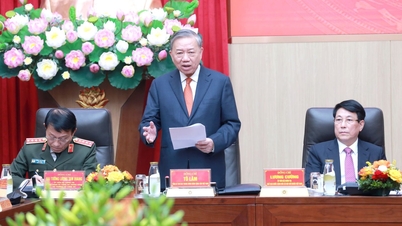Which are the two new salary tables applicable to cadres, civil servants and public employees in the health sector from July 1, 2024 when implementing the 2024 salary reform?
 |
| New salary scale applies to cadres, civil servants and public employees in the health sector. |
New salary scale applies to cadres, civil servants and public employees in the health sector
The National Assembly has just passed a Resolution on the 2024 state budget estimate, which includes comprehensive reform of wage policy according to Resolution 27-NQ/TW of 2018 on reforming wage policy for cadres, civil servants, public employees, armed forces and employees in enterprises issued by the Central Executive Committee.
Resolution 27-NQ/TW in 2018 agreed to build 02 new salary tables applicable to cadres, civil servants, and public employees nationwide in general and the health sector in particular. Accordingly, cadres, civil servants, and public employees in the health sector will apply the following 02 salary tables:
The salary scale for positions applies to cadres, civil servants and public employees holding leadership positions (elected and appointed) in the political system from the central to communal level according to the following principles:
- The salary level of a position must reflect the rank in the political system; the salary of a leader holding a leadership position must be based on that position. If a person holds many positions, he/she will receive the highest salary level; if he/she holds equivalent leadership positions, he/she will receive the same salary level; the salary level of a superior leader must be higher than that of a subordinate leader;
- Prescribe a salary level for each equivalent position; do not classify ministries, branches, departments, committees and equivalents at the Central level when building the salary table for positions at the Central level; do not distinguish different salary levels for the same leadership position according to the classification of administrative units at the local level but implement it through the allowance regime.
- The classification of equivalent leadership positions in the political system to design the salary table for positions is decided by the Politburo after reporting to the Central Executive Committee.
The salary scale for professional and technical skills according to civil servant ranks and professional titles of public employees applies generally to civil servants and public employees who do not hold leadership positions; each civil servant rank and professional title of public employees has many salary levels according to the following principles:
- Same level of job complexity, same salary;
- Working conditions are higher than normal and job incentives are implemented through job-based allowances;
- Rearrange the groups and ranks of civil servant ranks and professional titles of public employees, encourage public employees to improve their professional qualifications and skills.
- Appointment to civil servant ranks or professional titles of public employees must be linked to job positions and the structure of civil servant ranks and professional titles of public employees carried out by the agency, organization or unit managing civil servants and public employees.
In addition, at the National Assembly session, the Minister of Home Affairs said that up to now, 13/15 Ministries have completed the List of job positions in specialized fields, on that basis, approving the project to be able to implement salary reform in the coming time.
How will the salary structure of health sector officials, civil servants and public employees change after the 2024 salary reform?
According to the guidance of Resolution 27-NQ/TW in 2018, the salary structure of cadres, civil servants and public employees in the health sector has the following major changes:
+ Abolish the current basic salary and salary coefficient, and establish a basic salary with a specific amount in the new salary table.
+ Design a new salary structure including: Basic salary (accounting for about 70% of the total salary fund) and allowances (accounting for about 30% of the total salary fund). Additional bonuses (bonus fund equals about 10% of the total salary fund of the year, excluding allowances).
Thus, the main salary structure consists of two main items: basic salary accounting for 70% of the total salary fund and allowances accounting for 30% of the total salary fund, in addition, bonuses are additional. Therefore, cadres, civil servants and public employees in the health sector can actually receive:
Actual salary for health sector officials, civil servants and public employees = Basic salary + Allowance (if any) + Bonus (if any)
How will the allowances of cadres, civil servants and public employees nationwide change under the 2024 salary reform?
Resolution 27-NQ/TW in 2018 agreed to rearrange the current allowance regimes, ensuring that the total allowance fund accounts for a maximum of 30% of the total salary fund as follows:
- Continue to apply allowances:
+ Concurrent allowance;
+ Seniority allowance exceeding the framework;
+ Regional allowance;
+ Job responsibility allowance;
+ Mobility allowance;
- Combining preferential allowances by profession, responsibility allowances by profession and toxic and dangerous allowances (generally called allowances by profession) applied to civil servants and public employees of professions and jobs with higher than normal working conditions and with appropriate preferential policies of the State (education and training, health, courts, prosecution, civil enforcement, inspection, examination, auditing, customs, forestry, market management,...).
- Combine special allowances, attraction allowances and long-term work allowances in areas with especially difficult socio-economic conditions into work allowances in especially difficult areas.
- Abolish the following allowances:
+ Seniority allowance;
+ Leadership position allowance (by leadership positions in the political system to implement salary ranking);
+ Allowance for party work, political and social organizations;
+ Public service allowance (included in the basic salary);
+ Toxic and hazardous allowances (due to including working conditions with toxic and hazardous factors in occupational allowances).
Source


![[Photo] Cat Ba - Green island paradise](/_next/image?url=https%3A%2F%2Fvphoto.vietnam.vn%2Fthumb%2F1200x675%2Fvietnam%2Fresource%2FIMAGE%2F2025%2F12%2F04%2F1764821844074_ndo_br_1-dcbthienduongxanh638-jpg.webp&w=3840&q=75)




























































![[VIMC 40 days of lightning speed] Da Nang Port: Unity - Lightning speed - Breakthrough to the finish line](https://vphoto.vietnam.vn/thumb/402x226/vietnam/resource/IMAGE/2025/12/04/1764833540882_cdn_4-12-25.jpeg)















































Comment (0)